Submitted:
27 June 2023
Posted:
28 June 2023
You are already at the latest version
Abstract

Keywords:
1. Introduction
1.1. Far-field plasmonic effects: scattering
1.2. Near-field plasmonic effects
1.2.1. Non-propagating modes
1.2.2. Propagating modes
2. Methods
3. Result and discussion
3.1. ZAZ electrode modeling with one silver nanowire
3.2. Modeling a ZAZ electrode with multiple silver nanowires
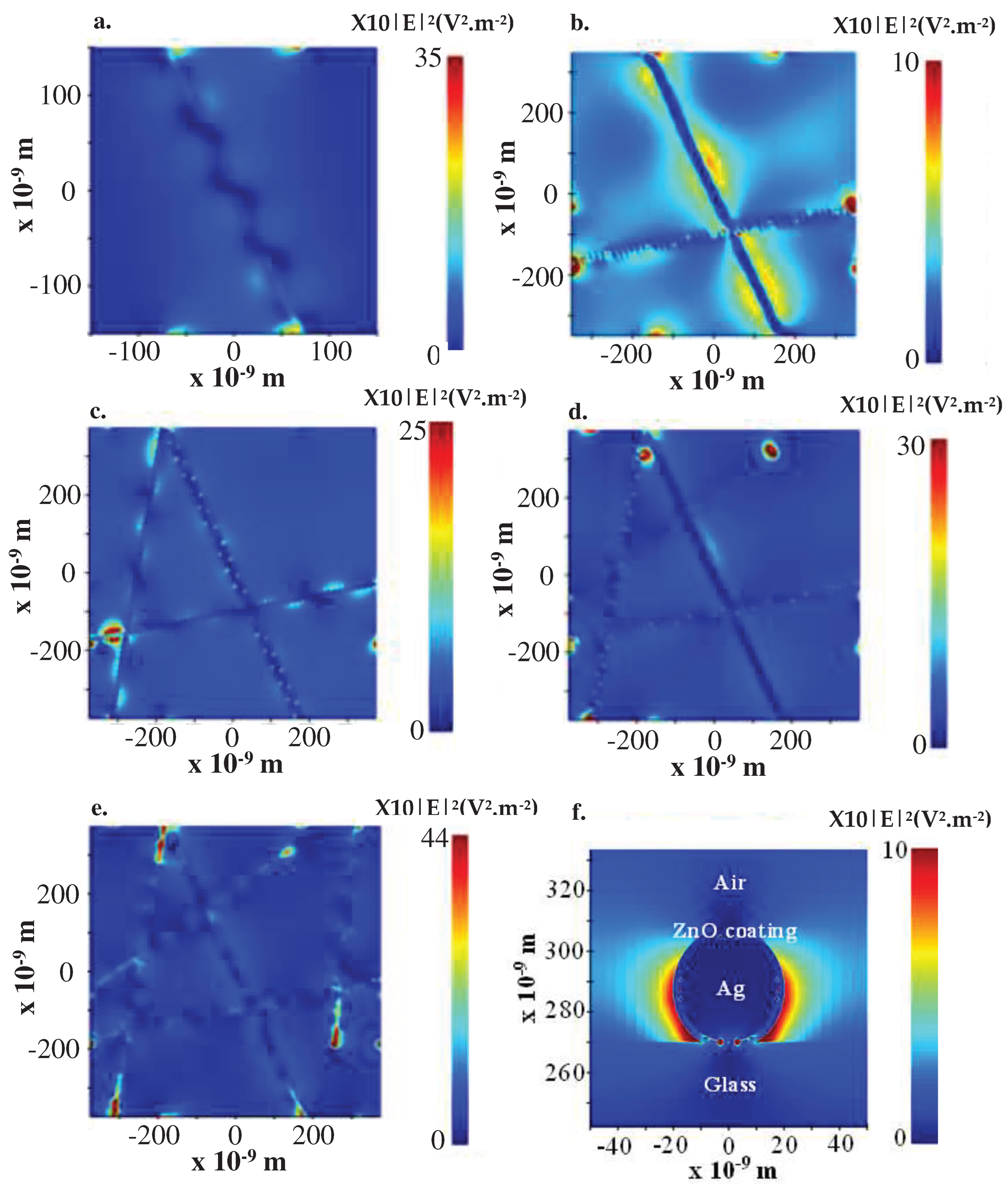
4. Conclusion
References
- G. V. Naik, V. M. Shalaev, et A. Boltasseva, « Alternative Plasmonic Materials: Beyond Gold and Silver », Advanced Materials, vol. 25, no 24, p. 3264-3294, 2013. [CrossRef]
- A. Boltasseva et H. A. Atwater, « Materials science. Low-loss plasmonic metamaterials », Science, vol. 331, no 6015, p. 290-291, janv. 2011. [CrossRef]
- R. W. Wood, « XLII. On a remarkable case of uneven distribution of light in a diffraction grating spectrum », The London, Edinburgh, and Dublin Philosophical Magazine and Journal of Science, vol. 4, no 21, p. 396-402, sept. 1902. [CrossRef]
- Lord Rayleigh, « III. Note on the remarkable case of diffraction spectra described by Prof. Wood », The London, Edinburgh, and Dublin Philosophical Magazine and Journal of Science, vol. 14, no 79, p. 60-65, juill. 1907. [CrossRef]
- A. Otto, « Excitation of nonradiative surface plasma waves in silver by the method of frustrated total reflection », Z. Physik, vol. 216, no 4, p. 398-410, août 1968. [CrossRef]
- E. KRETSCHMANN et H. RAETHER, « Radiative Decay of Non Radiative Surface Plasmons Excited by Light », Z. Naturforsch., A: Astrophys., Phys. Phys. Chem., vol. 23, no 2135-2136, nov. 1968. [CrossRef]
- A. C. Mayer, S. R. Scully, B. E. Hardin, M. W. Rowell, et M. D. McGehee, « Polymer-based solar cells », Materials Today, vol. 10, no 11, p. 28-33, nov. 2007. [CrossRef]
- S. M. Falke et al., « Coherent ultrafast charge transfer in an organic photovoltaic blend », Science, vol. 344, no 6187, p. 1001-1005, mai 2014. [CrossRef]
- S. Vedraine et al., « Intrinsic absorption of plasmonic structures for organic solar cells », Solar Energy Materials and Solar Cells, vol. 95, p. S57-S64, mai 2011. [CrossRef]
- K. N’Konou et al., « Impact of Ag@SiO2 core-shell nanoparticles on the photoelectric current of plasmonic inverted organic solar cells », Synthetic Metals, vol. 239, p. 22-28, mai 2018. [CrossRef]
- H. I. Park et al., « High Performance Organic Photovoltaics with Plasmonic-Coupled Metal Nanoparticle Clusters », ACS Nano, vol. 8, no 10, p. 10305-10312, oct. 2014. [CrossRef]
- D. H. Wang et al., « Enhancement of Donor-Acceptor Polymer Bulk Heterojunction Solar Cell Power Conversion Efficiencies by Addition of Au Nanoparticles », Angew. Chem. Int. Ed., vol. 50, no 24, p. 5519-5523, juin 2011. [CrossRef]
- I. Ibrahim Zamkoye, J. Bouclé, N. Leclerc, B. Lucas, et S. Vedraine, « Silver Nanowire Electrodes Integrated in Organic Solar Cells with Thick Active Layer Based on a Low-Cost Donor Polymer », Solar RRL, vol. 7, no 2, p. 2200756, 2023. [CrossRef]
- M. Chalh, S. Vedraine, B. Lucas, et B. Ratier, « Plasmonic Ag nanowire network embedded in zinc oxide nanoparticles for inverted organic solar cells electrode », Solar Energy Materials and Solar Cells, vol. 152, p. 34-41, août 2016. [CrossRef]
- F. Monestier et al., « Modeling the short-circuit current density of polymer solar cells based on P3HT:PCBM blend », Solar Energy Materials and Solar Cells, vol. 91, no 5, p. 405-410, mars 2007. [CrossRef]
- S.-W. Baek, J. Noh, C.-H. Lee, B. Kim, M.-K. Seo, et J.-Y. Lee, « Plasmonic Forward Scattering Effect in Organic Solar Cells: A Powerful Optical Engineering Method », Sci Rep, vol. 3, no 1, p. 1726, déc. 2013. [CrossRef]
- M. Salvador et al., « Electron Accumulation on Metal Nanoparticles in Plasmon-Enhanced Organic Solar Cells », ACS Nano, vol. 6, no 11, p. 10024-10032, nov. 2012. [CrossRef]
- S. Mokkapati, F. J. Beck, R. de Waele, A. Polman, et K. R. Catchpole, « Resonant nano-antennas for light trapping in plasmonic solar cells », J. Phys. D: Appl. Phys., vol. 44, no 18, p. 185101, avr. 2011. [CrossRef]
- Q. Gan, F. J. Bartoli, et Z. H. Kafafi, « Plasmonic-Enhanced Organic Photovoltaics: Breaking the 10% Efficiency Barrier », Advanced Materials, vol. 25, no 17, p. 2385-2396, 2013. [CrossRef]
- J.-F. Masson, « Portable and field-deployed surface plasmon resonance and plasmonic sensors », Analyst, vol. 145, no 11, p. 3776-3800, juin 2020. [CrossRef]
- K. Jung et al., « Plasmonic Organic Solar Cells Employing Nanobump Assembly via Aerosol-Derived Nanoparticles », ACS Nano, vol. 8, no 3, p. 2590-2601, mars 2014. [CrossRef]
- G. Das et al., « Plasmonic nanostructures for the ultrasensitive detection of biomolecules », vol. 39, p. 547-586, nov. 2016. [CrossRef]
- « The Plasmonic Insulator-Metal-Insulator as a Two-level System - SPP7 Abstract Submission Form ». https://program.eventact.com/Agenda/Lecture/90825?code=1638046 (consulté le 24 juin 2023).
- B. Sharma, R. R. Frontiera, A.-I. Henry, E. Ringe, et R. P. Van Duyne, « SERS: Materials, applications, and the future », Materials Today, vol. 15, no 1, p. 16-25, janv. 2012. [CrossRef]
- E. L. Lim, C. C. Yap, M. A. Mat Teridi, C. H. Teh, A. R. bin Mohd Yusoff, et M. H. Hj Jumali, « A review of recent plasmonic nanoparticles incorporated P3HT: PCBM organic thin film solar cells », Organic Electronics, vol. 36, p. 12-28, sept. 2016. [CrossRef]
- Y. H. Jang, Y. J. Jang, S. Kim, L. N. Quan, K. Chung, et D. H. Kim, « Plasmonic Solar Cells: From Rational Design to Mechanism Overview », Chem. Rev., vol. 116, no 24, p. 14982-15034, déc. 2016. [CrossRef]
- A. J. Morfa, K. L. Rowlen, T. H. Reilly, M. J. Romero, et J. van de Lagemaat, « Plasmon-enhanced solar energy conversion in organic bulk heterojunction photovoltaics », Appl. Phys. Lett., vol. 92, no 1, p. 013504, janv. 2008. [CrossRef]
- A. Moreau et al., « Controlled-reflectance surfaces with film-coupled colloidal nanoantennas », Nature, vol. 492, no 7427, Art. no 7427, déc. 2012. [CrossRef]
- H. Kallmann et M. Pope, « Photovoltaic Effect in Organic Crystals », J. Chem. Phys., vol. 30, no 2, p. 585-586, févr. 1959. [CrossRef]
- H. Raether, « Surface Plasmons on Smooth and Rough Surfaces and on Gratings », Springer Tracts in Modern Physics, vol. 111, janv. 1988. [CrossRef]
- X. H. Li, W. E. I. Sha, W. C. H. Choy, D. D. S. Fung, et F. X. Xie, « Efficient Inverted Polymer Solar Cells with Directly Patterned Active Layer and Silver Back Grating », J. Phys. Chem. C, vol. 116, no 12, p. 7200-7206, mars 2012. [CrossRef]
- L. Zhou et al., « Light Extraction of Trapped Optical Modes in Polymer Light-Emitting Diodes with Nanoimprinted Double-Pattern Gratings », ACS Appl. Mater. Interfaces, vol. 6, no 20, p. 18139-18146, oct. 2014. [CrossRef]
- I. Suárez et al., « Propagation length enhancement of surface plasmon polaritons in gold nano-/micro-waveguides by the interference with photonic modes in the surrounding active dielectrics », Nanophotonics, vol. 6, no 5, p. 1109-1120, sept. 2017. [CrossRef]
- T. Iqbal, « Propagation length of surface plasmon polaritons excited by a 1D plasmonic grating », Current Applied Physics, vol. 15, no 11, p. 1445-1452, nov. 2015. [CrossRef]
- S. Ahn, D. Rourke, et W. Park, « Plasmonic nanostructures for organic photovoltaic devices », J. Opt., vol. 18, no 3, p. 033001, févr. 2016. [CrossRef]
- J. B. Lassiter et al., « Plasmonic Waveguide Modes of Film-Coupled Metallic Nanocubes », Nano Lett., vol. 13, no 12, p. 5866-5872, déc. 2013. [CrossRef]
- C.-H. Chou et F.-C. Chen, « Plasmonic nanostructures for light trapping in organic photovoltaic devices », Nanoscale, vol. 6, no 15, p. 8444-8458, juill. 2014. [CrossRef]
- Q. H. Li, D. Zhu, W. Liu, Y. Liu, et X. C. Ma, « Optical properties of Al-doped ZnO thin films by ellipsometry », Applied Surface Science, vol. 254, no 10, p. 2922-2926, mars 2008. [CrossRef]
- E. D. Palik, Handbook of Optical Constants of Solids, vol. 3, 5 vol. Academic Press, 1998.
- M. Chalh, « Elaboration, caractérisation et modélisation optique d’électrodes transparentes intégrant des nanofils d’Ag pour des applications solaires », p. 223.
- J.-F. Li, Y.-J. Zhang, S.-Y. Ding, R. Panneerselvam, et Z.-Q. Tian, « Core–Shell Nanoparticle-Enhanced Raman Spectroscopy », Chem. Rev., vol. 117, no 7, p. 5002-5069, avr. 2017. [CrossRef]
- L. Sun, J. Wang, E. Zhang, et Q. Tian, « Study on the Mechanism of Super-Resolution Near-Field Structure High-Density Optical Data Storage », Jpn. J. Appl. Phys., vol. 42, no 8R, p. 5113, août 2003. [CrossRef]
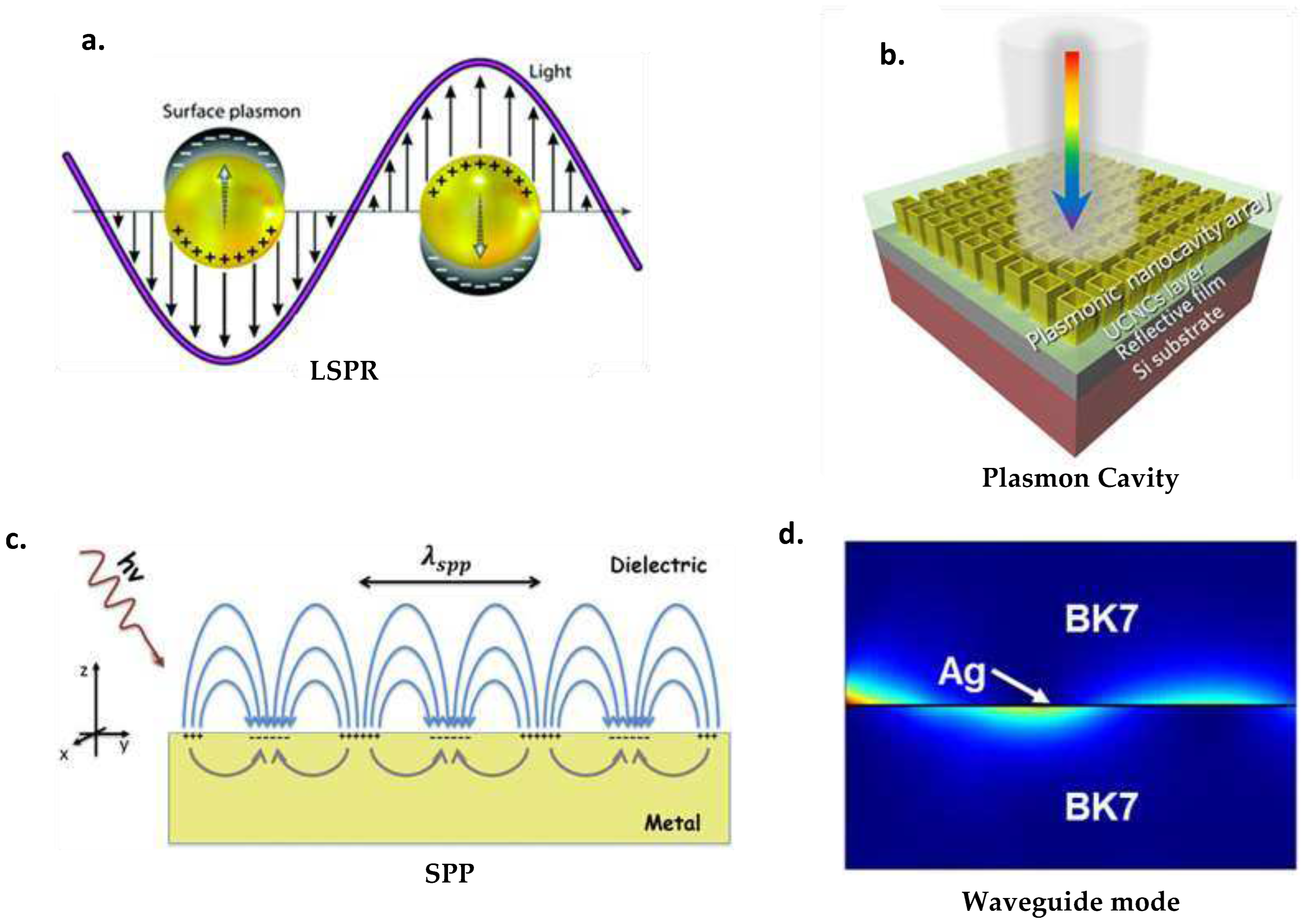
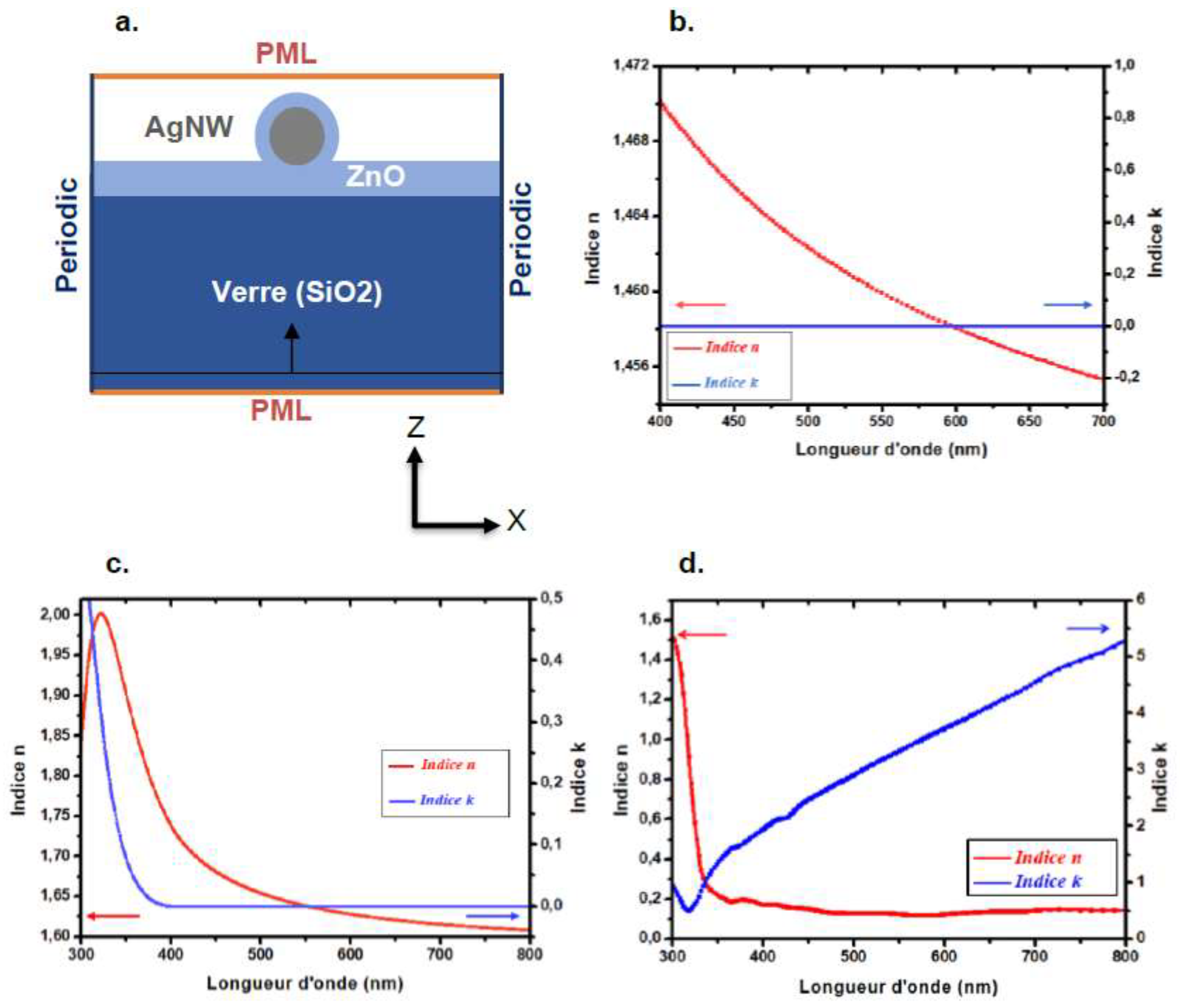
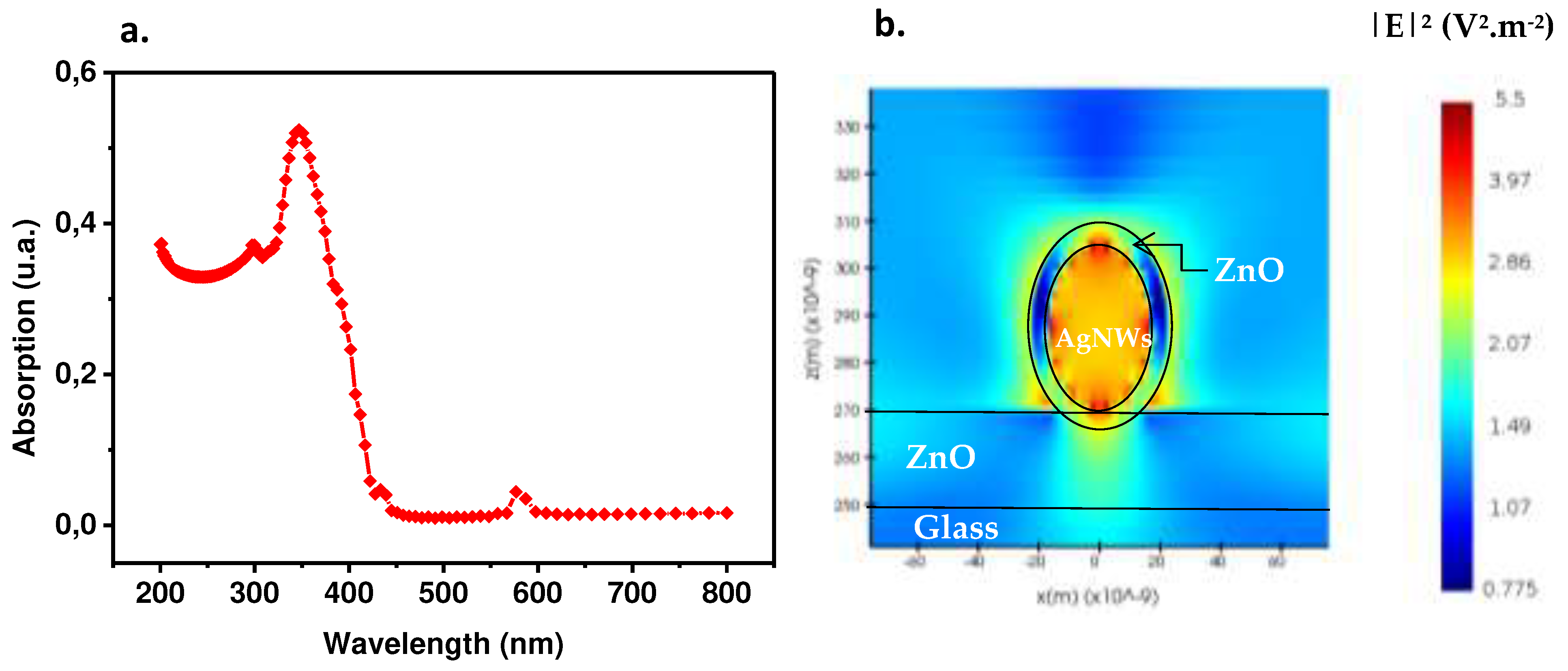
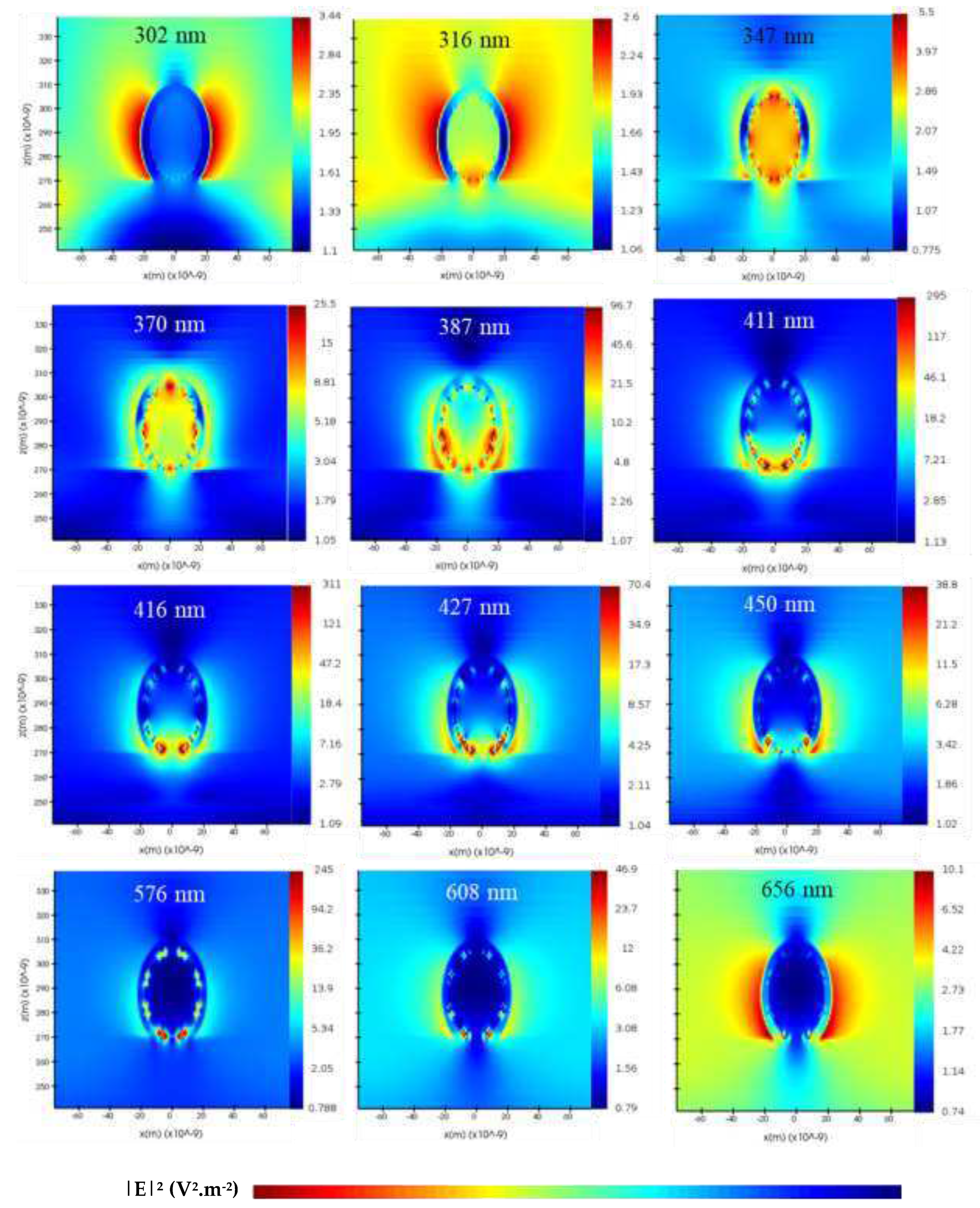
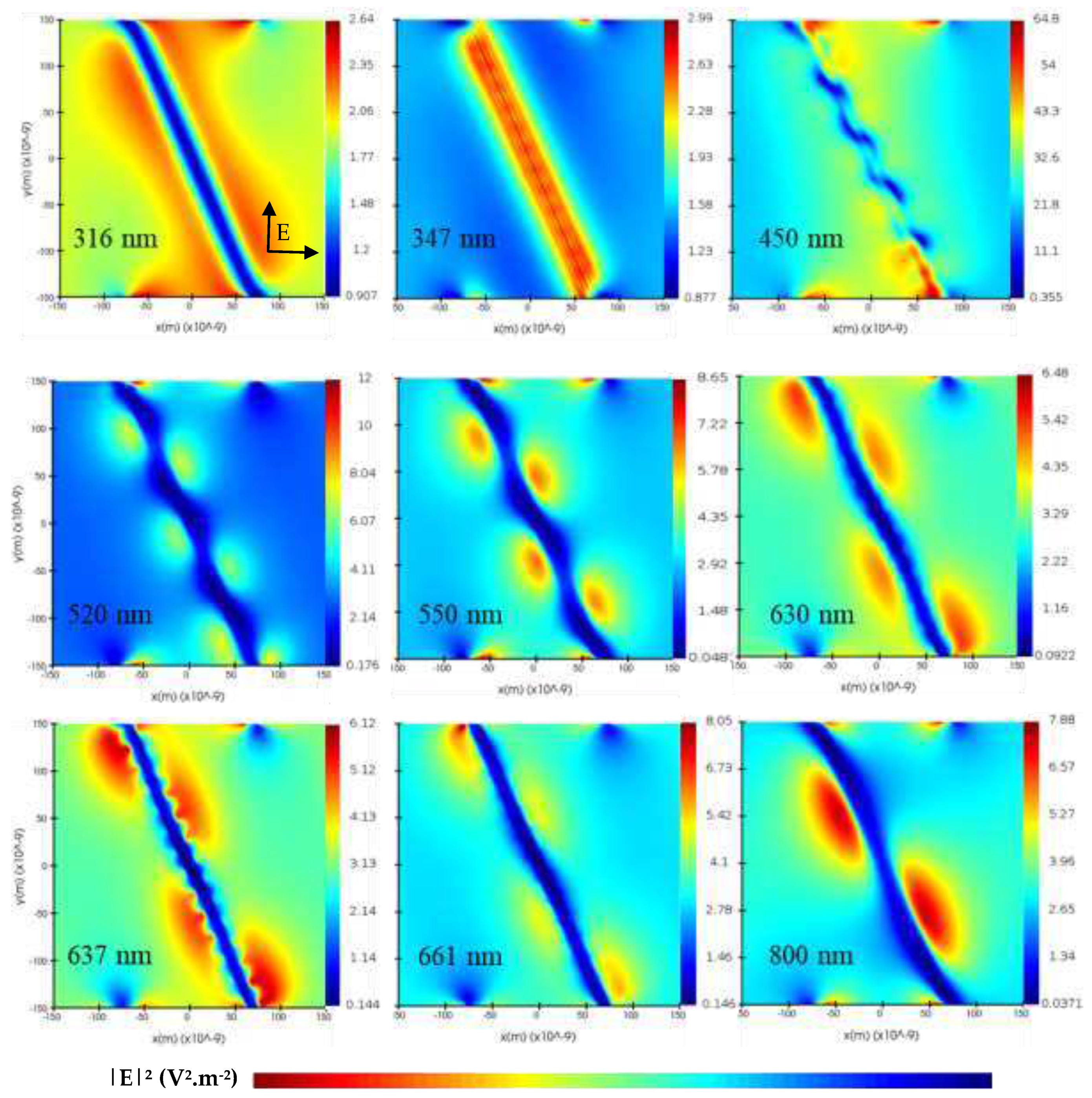
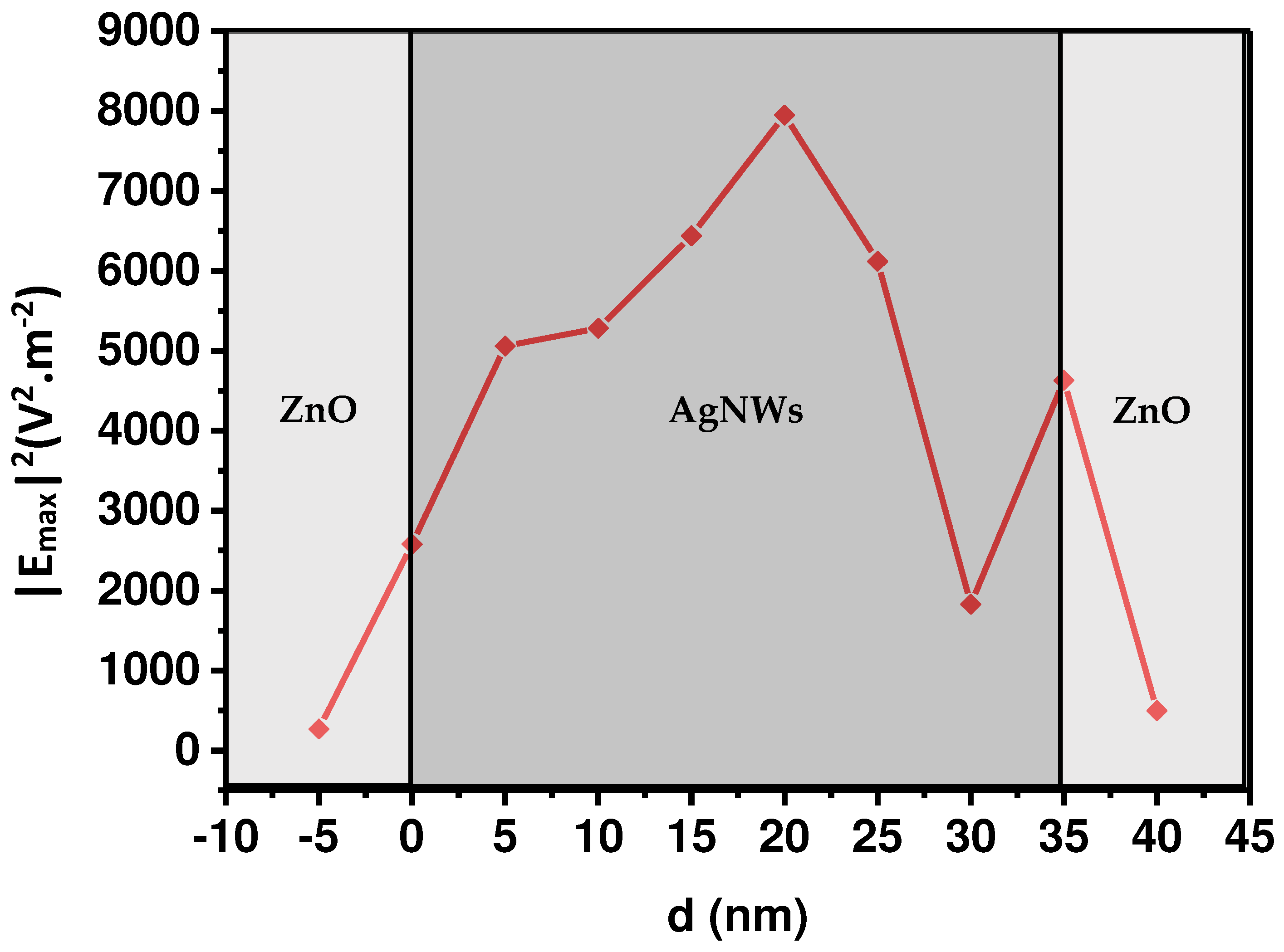
Disclaimer/Publisher’s Note: The statements, opinions and data contained in all publications are solely those of the individual author(s) and contributor(s) and not of MDPI and/or the editor(s). MDPI and/or the editor(s) disclaim responsibility for any injury to people or property resulting from any ideas, methods, instructions or products referred to in the content. |
© 2023 by the authors. Licensee MDPI, Basel, Switzerland. This article is an open access article distributed under the terms and conditions of the Creative Commons Attribution (CC BY) license (http://creativecommons.org/licenses/by/4.0/).




